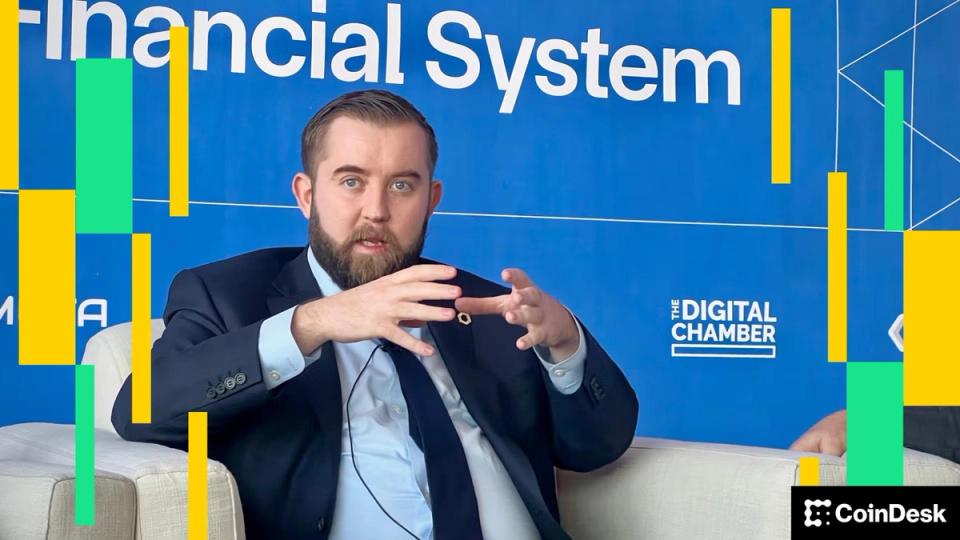Have you ever heard of crypto whales? These titans of the crypto empire hold the power to make waves with their massive holdings, influencing the prices of specific digital assets. Like big players in traditional markets, these whales can cause a splash that ripples through the entire market.
Since the entire blockchain industry can be affected when a crypto whale makes a move, this is worth understanding. Here we explore why whales are important and how traders can monitor their activity to find portfolio growth opportunities.
Who are crypto whales?
A crypto whale is a large holder of a particular cryptocurrency. Like the largest creature in the sea – the whale – crypto whales are people or organizations that own a significant amount of a particular cryptocurrency and can therefore make astronomical purchases.
No specific coin amount or threshold defines a whale. The crypto community generally agrees that whales hold at least 10% of a particular cryptocurrency in their crypto wallets.
And in the case of Bitcoin, most Bitcoin whales keep a minimum of 1000 BTC in their wallets. However, an entity like MicroStrategy owns more than 152,000 BTC by July 2023, putting the software intelligence company in this category.
Only a small number of investors make up the crypto whale community. However, with their large wallets, whales can single-handedly control coin prices, investor sentiment, and the entire cryptocurrency market using massive orders called buy and sell walls.
Sales walls occur when whales execute a large sales order. This usually causes the underlying asset price to fall, allowing whales to make purchases at a lower cost, while buying walls force investors to increase the price of a coin that a whale owns.
Why Track Crypto Whale Transactions?
Since cryptocurrency transactions are decentralized and transparent, the crypto community and investors closely monitor crypto whales’ activities. The monitoring of crypto-whales is known as “Whale Watching” or “Whale Tracking.” For example, if one of the top whales makes a deal, there is usually a public announcement on Whale Alert’s website and Twitter account.
An example of the alerts posted on X by the Whale Alerts account
Whales can create price volatility with their transactions, especially when they buy or sell a large amount of Bitcoin or other cryptocurrencies in one transaction. For example, when a whale sells their Bitcoin for fiat currency, the large transaction size affects the Bitcoin network liquidity.
That way, there is downward pressure on the current BTC price because other market participants and investors see the transaction and go on high alert. They watch for indicators to determine if whales are dumping their Bitcoin holdings.
A common sign that other market participants are watching at the moment is the exchange inflow average. It is the average amount of a specific cryptocurrency that a whale deposits in exchanges at a specific time.
Whales are likely to dump their assets if the average amount of coins per transaction is high. And if it happens to different whales at the same time, the whales will probably use a swap.
But why are these transactions tracked?
With this data and a record of whale activity, smaller investors can stay informed of current market realities and adjust their investment strategies if they believe whale activity could cause significant changes in a coin’s price.
Users can also vote for the coins and tokens they find attractive and provide useful data about the most active cryptocurrencies.
However, in some cases the whales can change their wallets, crypto exchanges or make a real big purchase. So this does not necessarily mean that retail investors should panic and buy or sell their coins when whales make big purchases.
How to successfully track whale movements
Tracking whales’ activities could be the difference between a successful and futile crypto investment. Since crypto whales can manipulate market trends and coin prices, monitoring their activities can help retail investors make informed trading decisions.
Investors who want insights into what crypto whales are buying and their other activities can successfully track whale movements using common crypto whale tracking tools and analytics, including:
Whale tracker tools and websites
such as Whale Alert, Watcher Guru, and the leading on-chain analytics platform, Whalemap. These platforms provide trading charts, real-time whale trade alerts and analytics for investors to track whale activity.
Exchange-to-exchange transactions
of crypto whales to determine the type of cryptocurrency and the amount, and prepare for upward or downward impacts on the coin value. When whales slide stablecoins into an exchange wallet, it can be a good investment. While the movement of volatile coins like Bitcoin and Ethereum could mean the whales dump their assets.
Exchange to wallet transactions
helps investors determine when whales withdraw their assets from crypto exchanges to wallets. This reduces the amount of crypto in circulation and affects the exchange’s liquidity.
Top Five Bitcoin Whales
Bitcoin is the world’s largest cryptocurrency by market capitalization and trading volume. Since its launch in 2009, millions of individuals, public entities, private organizations and even countries have invested heavily in the cryptocurrency. As mentioned earlier, Bitcoin whales are investors with 1000 BTC or more in their wallets. We highlight the top five individual Bitcoin whales below.
1. Satoshi Nakamoto
Satoshi Nakamoto is the father of Bitcoin and the first to add transaction blocks to the Bitcoin network and mine new BTC. According to data from River Financial, Satoshi mined approximately 22,000 blocks of Bitcoin transactions from January 2009 until he left the project in 2011.
At the time of writing, Satoshi has stored 1.1 million BTC across approximately 22,000 Bitcoin addresses. The coins have reportedly never been used for any transaction other than network testing.
2. The Winklevoss brothers
Tyler and Cameron Winklevoss are other popular Bitcoin whales with holdings totaling 70,000 BTC according to Forbes. The brothers have also invested in other cryptocurrencies such as Ethereum, and crypto-related businesses, such as their privately held Gemini Exchange. The exchange is one of the most respected cryptocurrency exchanges today for buying, selling and storing Bitcoin and other digital assets.
3. Michael Saylor
Michael Saylor is a well-known Bitcoin maximalist with several publications of bullish Bitcoin posts on Twitter. The businessman is also popular for his contributions to the crypto industry through his company, MicroStrategy – a business intelligence, mobile software and cloud-based service provider in the United States.
While MicroStrategy is an institutional Bitcoin investment company with 130 thousand BTC stake, Saylor personally owns more than 17,000 BTC, as revealed personally in an interview in 2021.
4. Barry Silbert
Barry Silbert is a big name in the crypto space. The billionaire and founder of Digital Currency Group (DCG) runs a conglomerate of five crypto-focused companies, including Genesis and Grayscale. Silbert and his group of companies support Bitcoin and blockchain companies with financial investments and funding, and DCG has reportedly invested in more than 160 blockchain and crypto companies today.
5. Tim Draper
Tim Draper is another venture capitalist who made a fortune through crypto investments. Draper was one of the earliest investors in Skype and Tesla, and one of the earliest heavy investors in Bitcoin in 2012. In 2014, Draper added 29,000 BTC to his holdings.
Final thoughts
Crypto whales are wealthy individuals and entities that can manipulate the entire crypto market with high volume transactions. Because of their influence, their activities can lead to gains or losses for other crypto-investors.
Savvy investors understand that Bitcoin whales are essential in the crypto ecosystem. They help maintain liquidity, and retail investors can monitor whale activity to make the most of their investments. While this can be a good decision, investors need to have their trading plans and rely on something other than whale movements.
Frequently Asked Questions
How do you identify crypto whales?
Investors can identify crypto whales by monitoring the wallet addresses of the largest coin holders or following websites like Whale Alert for crypto whale transactions.
How do crypto whales make money?
By opening multiple buy orders at prices above the current market value (a buy wall). That way, other investors are forced to buy the manipulated coin at higher prices set by the whales.
Who are the biggest whales in crypto?
The biggest crypto whales are Satoshi Nakamoto, Michael Saylor, The Winklevoss Twins, and Vitalik Buterin, to name a few.
Should you follow whales in crypto?
Tracking crypto whales and their activities can help investors anticipate major market movements and price swings. These investors can adjust their strategies and make more profitable trades with the information.
Where do whales keep their crypto?
Whales store their cryptos in hardware or self-storage wallets. These cold wallets are not connected to the internet, so they are more secure.
Disclaimer:
THIS ARTICLE IS PROVIDED FOR INFORMATIONAL PURPOSES ONLY. IT IS NOT INTENDED TO PROVIDE ANY INVESTMENT, TAX OR LEGAL ADVICE, AND SHOULD NOT BE CONSIDERED AN OFFER TO BUY OR SELL OR HOLD DIGITAL ASSETS. DIGITAL ASSET HOLDING, INCLUDING STABLE COINS, INVOLVES A HIGH DEGREE OF RISK, CAN FLUCTUATE GREATLY, AND MAY EVEN BECOME WORTHLESS. YOU SHOULD CAREFULLY CONSIDER WHETHER TRADING OR HOLDING DIGITAL ASSETS IS SUITABLE FOR YOU IN THE LIGHT OF YOUR FINANCIAL CONDITION. PLEASE CONSULT YOUR LEGAL/TAX/INVESTMENT PROFESSIONAL FOR QUESTIONS REGARDING YOUR SPECIFIC CIRCUMSTANCES.
Disclaimer for Uncirculars, with a Touch of Personality:
While we love diving into the exciting world of crypto here at Uncirculars, remember that this post, and all our content, is purely for your information and exploration. Think of it as your crypto compass, pointing you in the right direction to do your own research and make informed decisions.
No legal, tax, investment, or financial advice should be inferred from these pixels. We’re not fortune tellers or stockbrokers, just passionate crypto enthusiasts sharing our knowledge.
And just like that rollercoaster ride in your favorite DeFi protocol, past performance isn’t a guarantee of future thrills. The value of crypto assets can be as unpredictable as a moon landing, so buckle up and do your due diligence before taking the plunge.
Ultimately, any crypto adventure you embark on is yours alone. We’re just happy to be your crypto companion, cheering you on from the sidelines (and maybe sharing some snacks along the way). So research, explore, and remember, with a little knowledge and a lot of curiosity, you can navigate the crypto cosmos like a pro!
UnCirculars – Cutting through the noise, delivering unbiased crypto news







